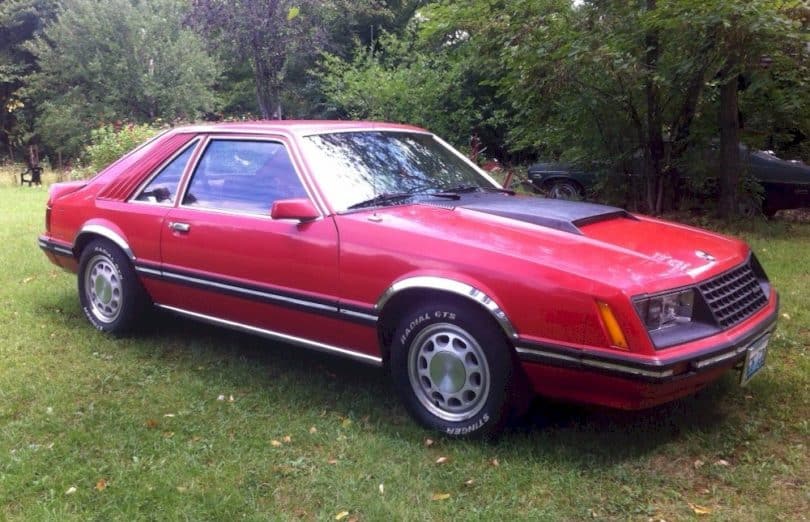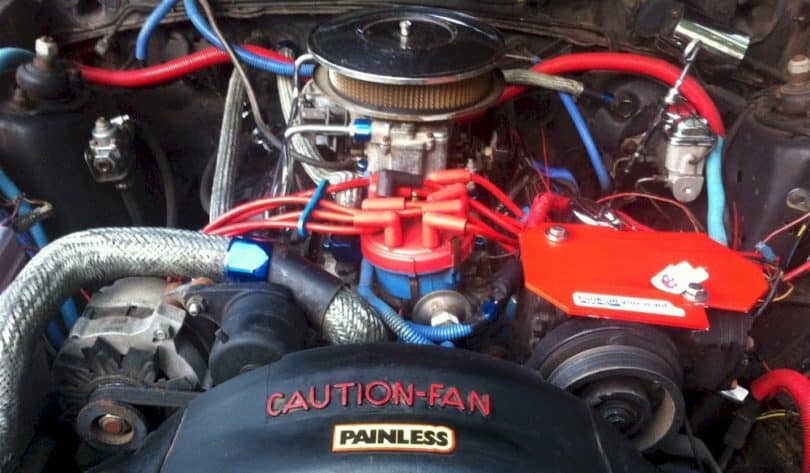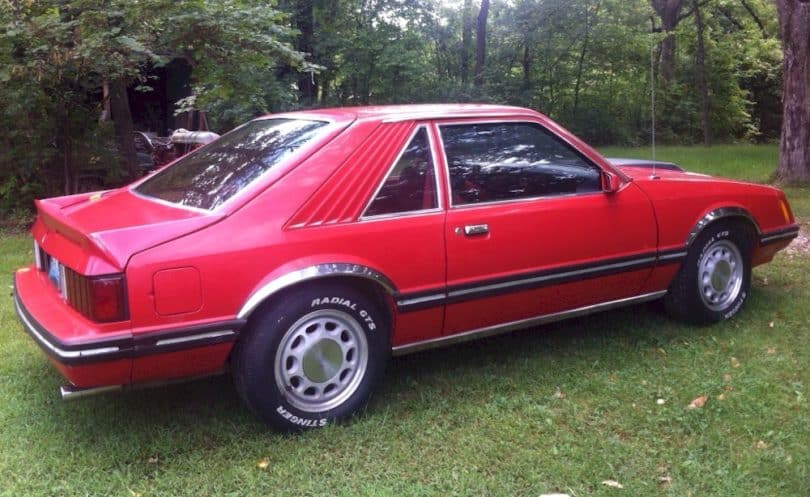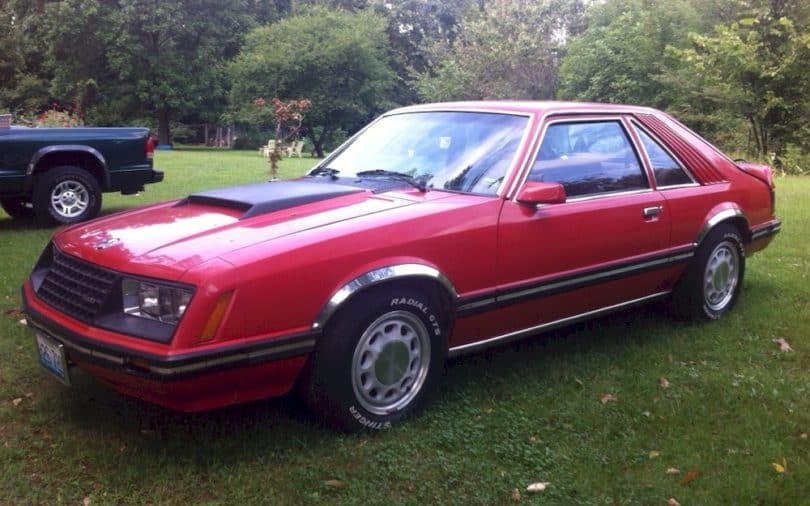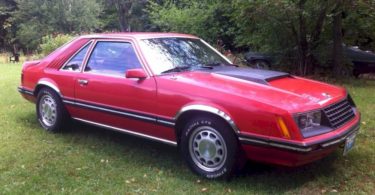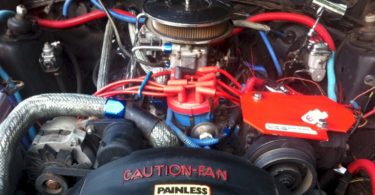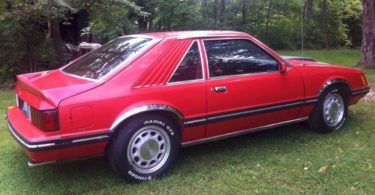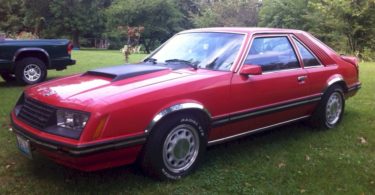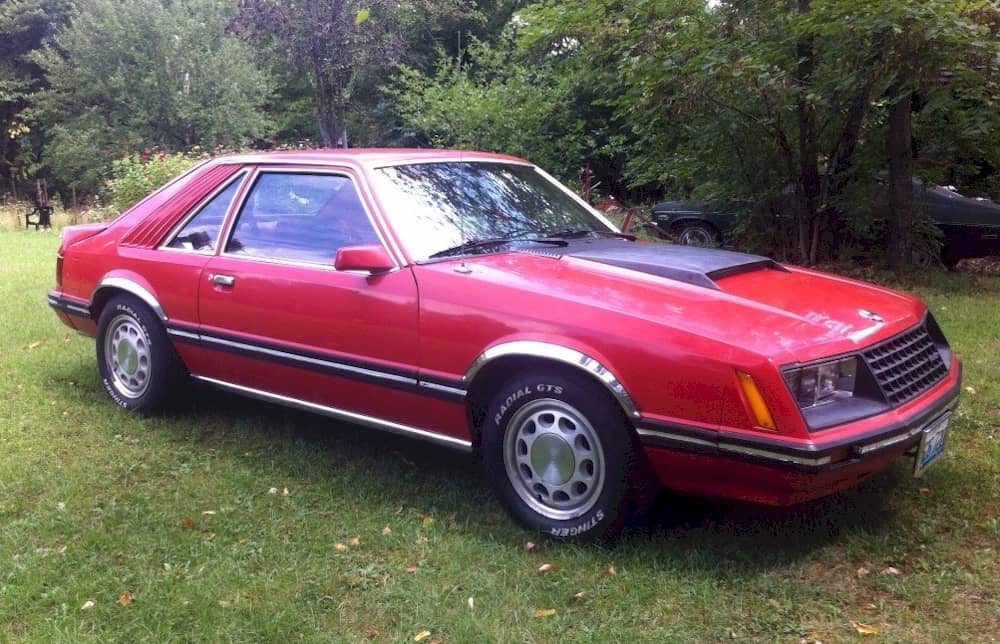
- With the familiar 302 cubic inch V8 replaced by a fuel saving 255 cubic inch V8 that produced 117 horsepower, the turbocharged inline four was the top performing Mustang in 1980.
- While all Mustang grilles were slightly restyled for 1980, the Cobra grille was modeled after the 1979 pace car, making it distinct from its predecessor.
- A mid-year replacement in 1979, the 201 cubic inch inline six was the standard six in 1980. Though horsepower dropped from the V6 model, torque was increased with the larger engine.
Muscle Car Specifications
Motivated by the high sales numbers of the 1979 Mustang, Ford made few changes to the interior or exterior of the Mustang. In keeping with the car’s tradition, small details were changed to distinguish different year models, but the overall look of the cars changed very little.
Engine options were much different than the initial offerings of the 1979 models, but were the same as the later 1979 models produced. Both the less powerful V8 and inline six were introduced during the 1979 year model in response to the second oil crisis and carried over into 1980 due to the lingering desire for fuel economy. Rightfully so, Ford was touting the turbocharged inline four as its performance car, obviously banking on turbocharged engines being the future of performance in the face of ongoing energy concerns. Producing 135 horsepower, the turbocharged four easily trumped the 117 horsepower available on the only V8 produced in 1980.
All model options were the same, and the Cobra still came standard with the turbocharged four and performance suspension system, both of which were options on the other models. The interior of the base model was upgraded to include high-back bucket seats as standard options. First offered in the 1979 models, 1980 Mustangs continued to offer full leather seats as an alternative to the long-standing tradition of vinyl. Cloth seats also were available. Additionally, all Mustangs now came standard with steel-belted radials (the Cobra was equipped with Michelin TRX tires to compliment its special suspension).
Total Mustang production for the year was down from 1979 but still showing good numbers with 271,322 cars built. Selling 98,497 of those, the hatchback model continued the tradition it began the previous year of closing in on the coupe’s domination of total Mustang production.
Coupe
Still the best selling Mustang model, as it had continuously been since the car’s inception, total production for the coupe was 128,893 in 1980. The coupe could be equipped with the Sport Option, which basically turned all the trim to black paint and had distinctive wheel covers. The new “Carriage Roof” was just a vinyl top that, according to the Mustang brochure, “gives a convertible look to Mustang.” The government ban on convertibles would be in place until 1983.
Hatchback
With high sales numbers, the hatchback model offered the same options available on the coupe, with the addition of the Cobra package option.
Two-Door Ghia
As Ford marketed Mustang to not only drivers who wanted a sports car, but also those who desired luxury, they offered the Ghia model as an upgrade to the coupe. Outside, the Ghia had wraparound bodyside molding and pin stripes, and inside it contained features such as plush carpeting and door pouches. 23,647 Ghia’s were produced in 1980.
Three-Door Ghia
The hatchback version of the Ghia was marketed to those who wanted a luxury sports car. It came with the same standard features as the Ghia coupe. Further illustrating the growing desire for hatchback Mustangs, the hatchback version of the Ghia also was closing the production gap between its coupe version, with 20,285 hatchback Ghias produced that year.
Competition
The best selling car of 1980 was Chevrolet’s new Citation, which replaced the Nova and moved 811,540 units that year. This was the first year a compact car was the best selling car in America, and marked Chevy’s entry into the front-wheel drive market to compete with imports like the Honda Accord and Volkswagon Dasher. In fact, GM’s four divisions sold a total of 1.39 million cars based on the platform of the Citation, known as the X-body.
Other than the front-wheel drive aspect, the Citation was very similar to the Mustang when it came to engine options and fuel economy. With a new best seller, it was clear the compact and subcompact cars were the business to be in during the early 1980s.
Engine Specifications
Tubro-Charged143 hp
119 hp @ 5200 rpm
| Type | Size | Carb | Horse Power | Tourqe |
|---|---|---|---|---|
| I4 Turbo | ||||
| V6 | ||||
| I4 | 2.3L I4 | Fuel Injection | 88 hp | 132 lb-ft |
| I6 | 2.8 L | Fuel Injection | 91 hp | |
| V8 | 260ci | 1x2bbl | 164 hp |
Performance Statistics
| 0 to 60 mph | Quarter Mile | Engine | Source |
|---|---|---|---|
| 11.3 sec | 18.4 sec | 255ci | Estimate |

